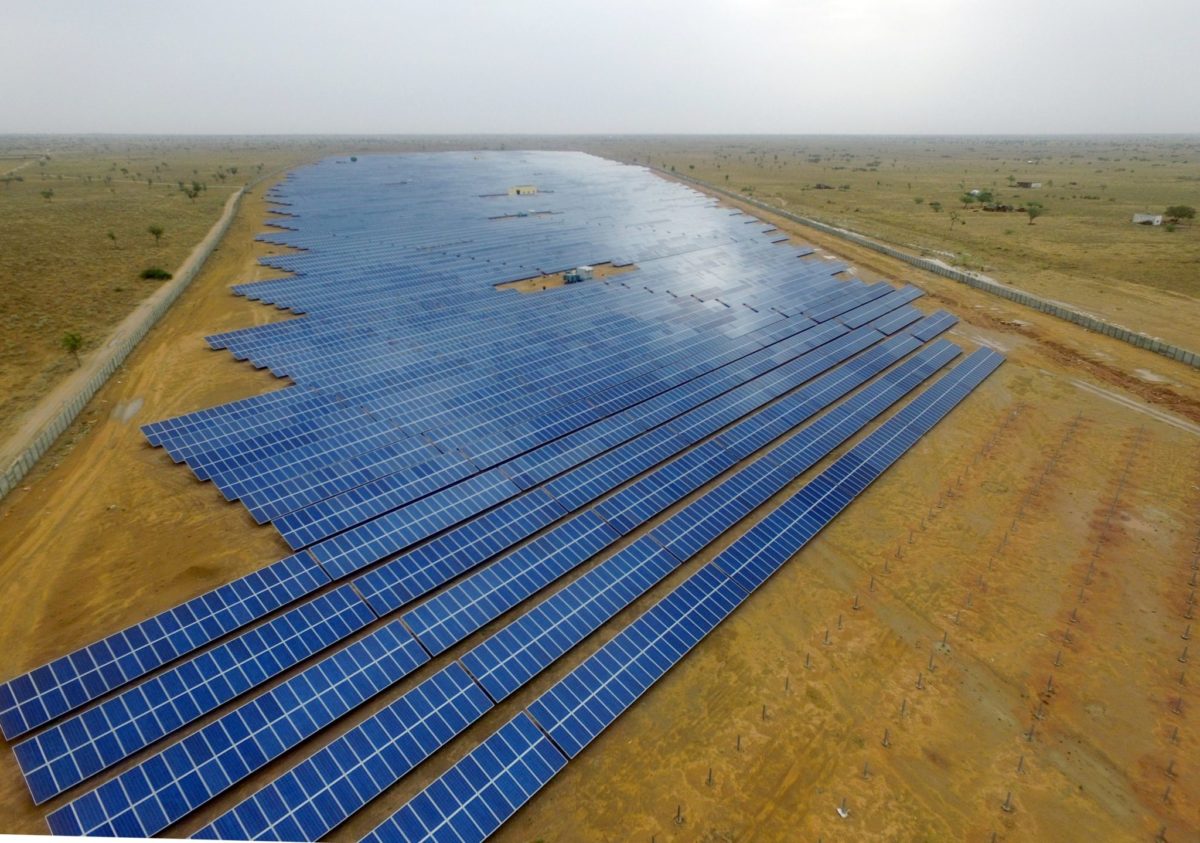To achieve its goal of installing 175 GW of renewable energy capacity by 2022, the Indian Government says in its end of year review that it will tender a further 60 GW of solar and 20 GW of wind capacity in 2018-19 and 2019-20.
The aim is to close off bidding for the entire amount by March 2020, thus leaving two years’ time for the execution of projects.
Looking at the solar sector, the MNRE says that competitive bidding processes involving reverse e-auctions have helped to significantly bring down tariffs, with the lowest solar tariff submitted to date being Rs 2.44/kWh in July 2018, down from around Rs 18/kWh in 2010.
This was said to be “due to various factors like economies of scale, assured availability of land and power evacuation systems, etc.” It made no mention of the fact that many auctions to date have been postponed, however, having suffered from low, or no, bidder interest, due to various issues like low ceiling prices and ongoing policy uncertainties.
Impressive growth
Despite the issues in the country’s renewables industry, the MNRE finds that globally, India now has the fifth largest installed capacity of renewable energy with around 73.35 GW as of October 31, 2018. Meanwhile, it ranks fourth in terms of installed wind capacity, and fifth for solar power.
Out of the around 73.35 GW of installed capacity, 34.98 GW is said to comprise wind, 24.33 GW solar, 4.5 GW small hydro power and 9.54 GW bio-power. Furthermore, projects totaling 46.75 GW of capacity have been either tendered or are under installation, including 36.6 GW of solar and 9.42 GW of wind.
Overall, it says that renewable energy accounted for 21% of the country’s cumulative installed energy capacity (347.37 GW), with 101.83 billion units of renewable power generated during the year 2017-18.
Notably, during the last four and a half years, India’s cumulative renewable energy installed capacity jumped around 106%, from 35.51 GW as of October 31, 2014, to 73.35 GW as of October 31, 2018.
In the grid-connected solar sector, the MNRE says that 47 parks with an aggregate capacity of 26,694 MW have been approved in 21 states up to November, 2018. “Over 1,00,000 lakh acres of land identified for various solar parks out of which over 75,000 acres have been acquired. Solar projects of aggregate capacity 4195 MW have been commissioned inside various solar parks,” it adds.
Just last week, MNRE launched 23 GW of solar projects in Leh and Ladakh. Phase I of the plan involves 2.5 GW of PV capacity in the Kargil region, and 5 GW in Leh district, it said at the time.
In the off-grid sector, meanwhile, over four million solar lanterns and lamps, 1.7 million solar home lights, 640,000 solar street lights and 196,000 solar pumps are said to have been installed in the country.
Overall, the figures are encouraging, considering India’s pledge under the 2015 Paris Climate Agreement to generate at least 40% of its electricity from clean sources by 2030.
This content is protected by copyright and may not be reused. If you want to cooperate with us and would like to reuse some of our content, please contact: editors@pv-magazine.com.









By submitting this form you agree to pv magazine using your data for the purposes of publishing your comment.
Your personal data will only be disclosed or otherwise transmitted to third parties for the purposes of spam filtering or if this is necessary for technical maintenance of the website. Any other transfer to third parties will not take place unless this is justified on the basis of applicable data protection regulations or if pv magazine is legally obliged to do so.
You may revoke this consent at any time with effect for the future, in which case your personal data will be deleted immediately. Otherwise, your data will be deleted if pv magazine has processed your request or the purpose of data storage is fulfilled.
Further information on data privacy can be found in our Data Protection Policy.